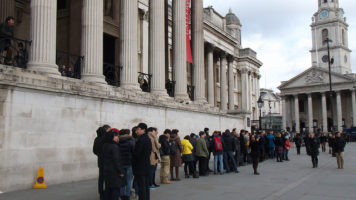 My son is an IT consultant and over the years we have often discovered commonalities between our work. He was the one who first put me on to the concept of UX Design (UX = User Experience). The fact that we kept finding themes relevant to both our professions used to surprise me. Now I realize that he works with professionals in a complicated specialty who have to work with/communicate with end users who have no understanding of the vocabulary or practice of the discipline. Sounds familiar.
My son is an IT consultant and over the years we have often discovered commonalities between our work. He was the one who first put me on to the concept of UX Design (UX = User Experience). The fact that we kept finding themes relevant to both our professions used to surprise me. Now I realize that he works with professionals in a complicated specialty who have to work with/communicate with end users who have no understanding of the vocabulary or practice of the discipline. Sounds familiar.
I recently was lamenting to my son an epic fail of customer relations on the part of the company that provides my business’s CRM database. (They implemented a change, with no warning, that moved significant quantities of data to a big pile of “Additional Information.”) The reasons for doing so made some sense from their point of view but the lack of consideration of what it would mean to the customer and the utter lack of communication in advance was stunning. [While no physical injury was involved, I am reminded of the tweet from Ron Evans, an arts marketing consultant, about the United Airlines “Doc off a plane” fiasco: “So nobody @ #united ever mapped out the user experience for passengers who refuse involuntary bump and said ‘yeah, that’s not a good idea.'”?]
John told me about a concept in IT development called Voice of the Customer. The idea is sometimes limited to what one might call in-depth market research, but he said it is also sometimes taken literally in product development meetings: someone is designated to represent the customer’s point of view as ideas are considered.
The implications for community engagement could be huge. Imagine, at a minimum, someone who is charged with keeping at the front of their minds “How would the people we are trying to reach respond to this?” The first, and obvious, objection should be “How would you know?” And that leads to the teachable moment. At the very least you need to talk with them; at best, include them in the conversation.
Regular readers of this blog know that I am uncomfortable with the distancing that is created by words like audience and customer. We need to build personal relationships and those words do not help that. So, I would advocate for a dedicated “Voice of the Community”–however the role is defined in an organization–to be included in all discussions of programming, from design to implementation.
And even if you don’t implement this, thinking that it might be a good idea could improve decision making processes.
Engage!
Doug
Photo: ![]() Some rights reserved by oatsy40
Some rights reserved by oatsy40
